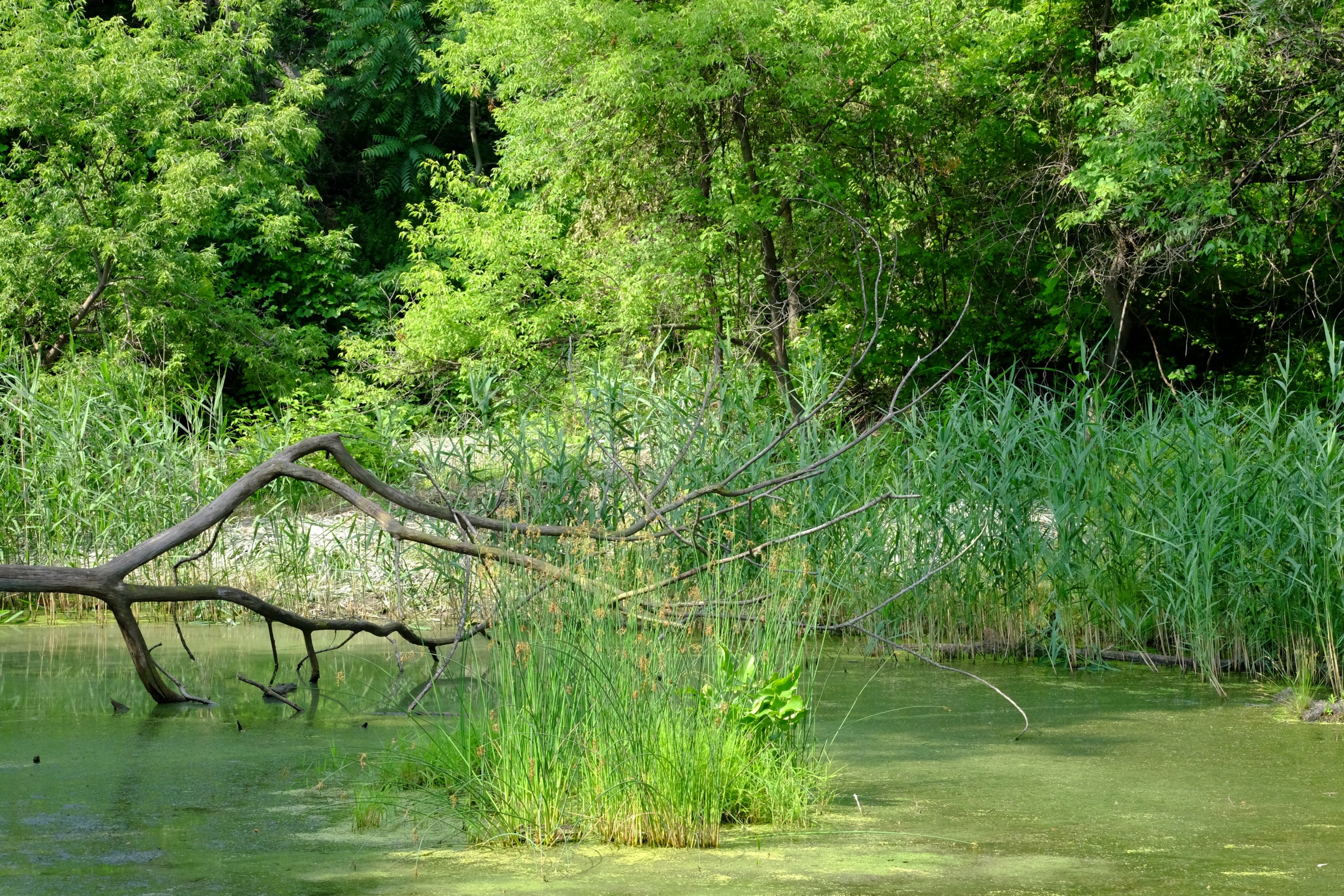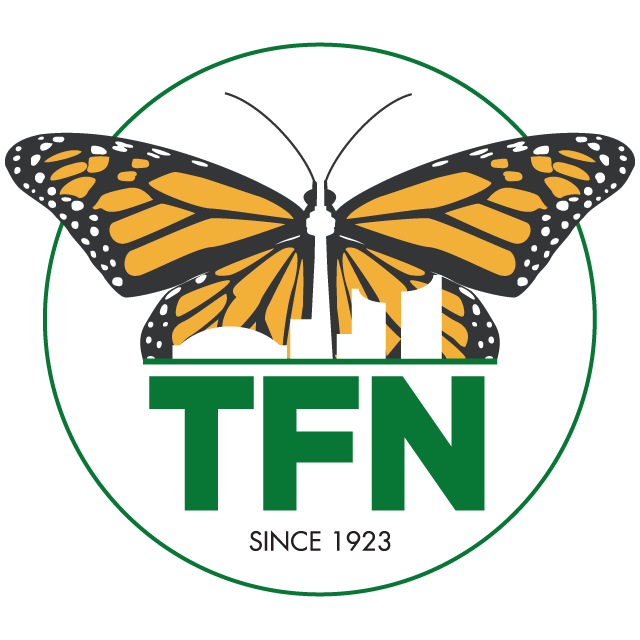With some four-hundred identified species of wildflower, shrub, and tree to enjoy, and deep history stretching back to the earliest days of Toronto (York), this might be the best fifteen minute walk our city has to offer.
Distance: 600m, circular route
Difficulty: Easy (paved path, mostly flat. One short staircase – see Waypoint #6 below)
Washrooms: None
Walk route contributed by TFN member, Jason Ramsay-Brown. All waypoint photos and descriptions by the same unless otherwise attributed.

Walk starts at the south end of the brick road through the Todmorden Mills Heritage Site. There is a small, free, public parking lot at the trail head. To access via TTC, take the 100 Flemingdon Park bus north from Broadview Station and exit at Broadview & Mortimer Ave/Pottery Rd. Walk down Pottery Rd to the Todmorden Mills Heritage Site (about 10 minutes, very steep hill)
 Oxbow Bridge
Oxbow Bridge
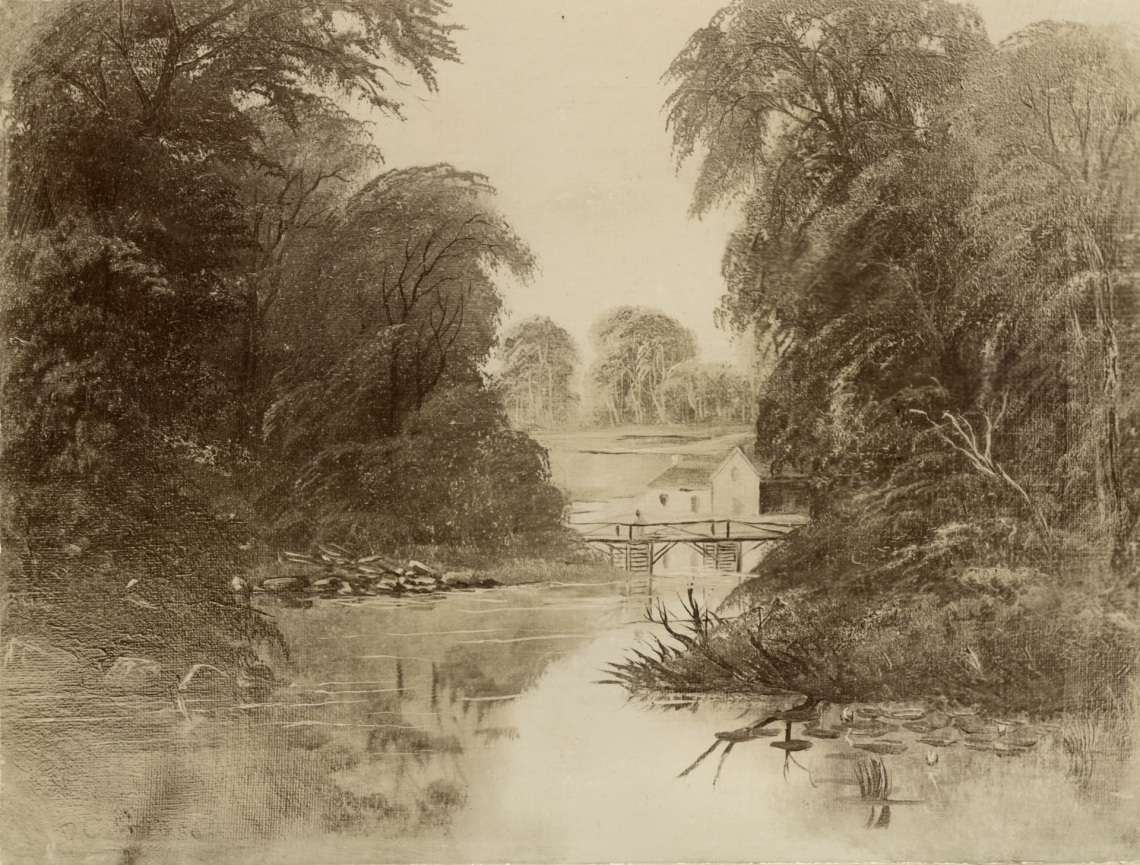
Prior to construction of the Don Valley Parkway in 1959, this bridge would have spanned the Don River!
An unusual u-shaped curve in the river, called an oxbow, once flowed across Todmorden, and helped to power some of the earliest industry in Toronto. At the end of the 18th century, the Skinner family was awarded mill stones and irons by then lieutenant-governor John Graves Simcoe, allowing them to build Toronto’s first grist mill here. A few decades later, Todmorden would serve as home to one of the very first machine-made paper mills in Upper Canada, producing the newsprint used by William Lyon Mackenzie’s newspaper, The Colonial Advocate. In 1855, the Taylor Brothers opened their Lower Mill here. For nearly a century, this area was central to the lives of all Torontonians, but as the city grew, the importance of Todmorden waned.
With construction of the DVP, the Don was rerouted to flow past Todmorden on the opposite side of the roadway. This river remnant below you is now fed by surrounding springs, and stormwater that drains in from the nearby parking lots and local roads, including the DVP. The step-pool channel to the south-east of the bridge, coupled with prodigious and strategic-placed plantings, work together to moderate and mitigate contaminants delivered by the runoff.
 WWII POW Camp
WWII POW Camp
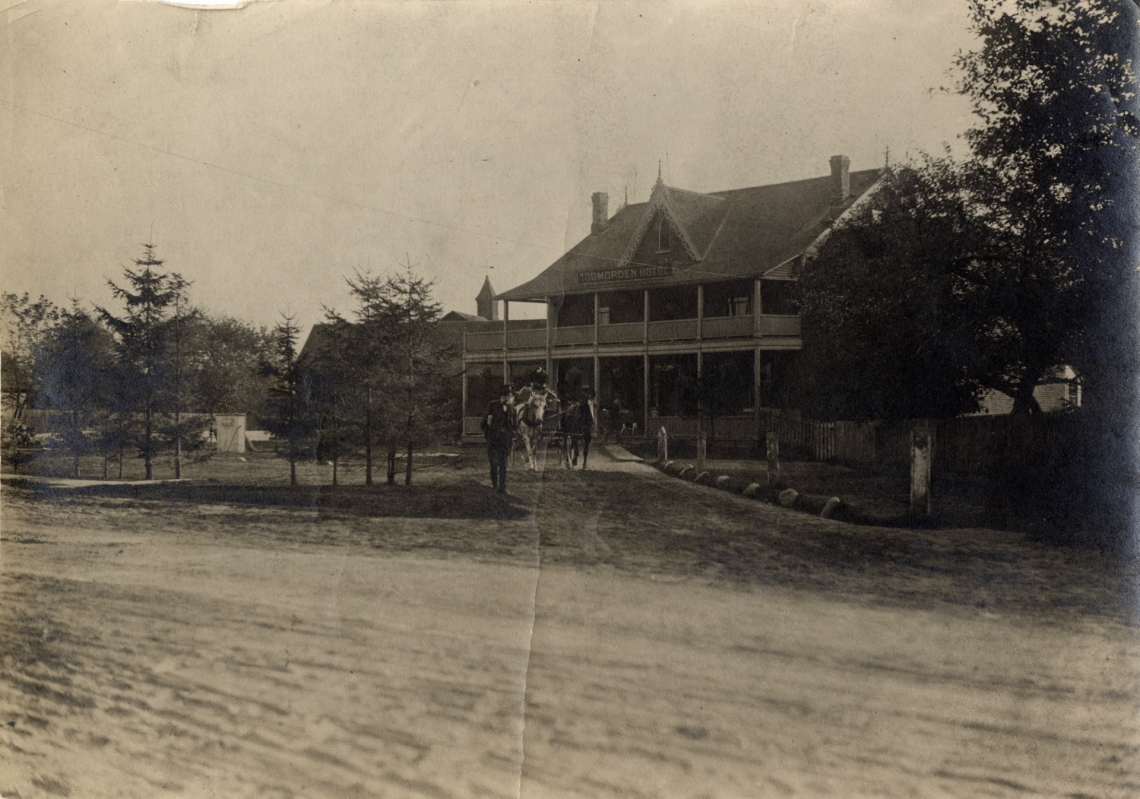
In the midst of World War II, the area occupied by much of this modern-day parking lots served as a prisoner-of-war camp for members from the German merchant marines. True Davidson, the first mayor of the Borough of East York, and one of those responsible for creating the Todmorden Mills Heritage Museum, recollected:
“I remember being told by a long-time resident of East York that these were very low-risk prisoners, mostly merchant seamen caught in Commonwealth ports when war was declared. The internees worked in the brickyards and . . . often socialized with their guards and residents of the community after work in the bar at the Todmorden Hotel at the top of Pottery Road hill.”
Immediately following the end of the war, camp structures fell to arsonists and vandals, and by March, 1946, nothing of the camp remained.
 Cup plants (Silphium perfoliatum)
Cup plants (Silphium perfoliatum)
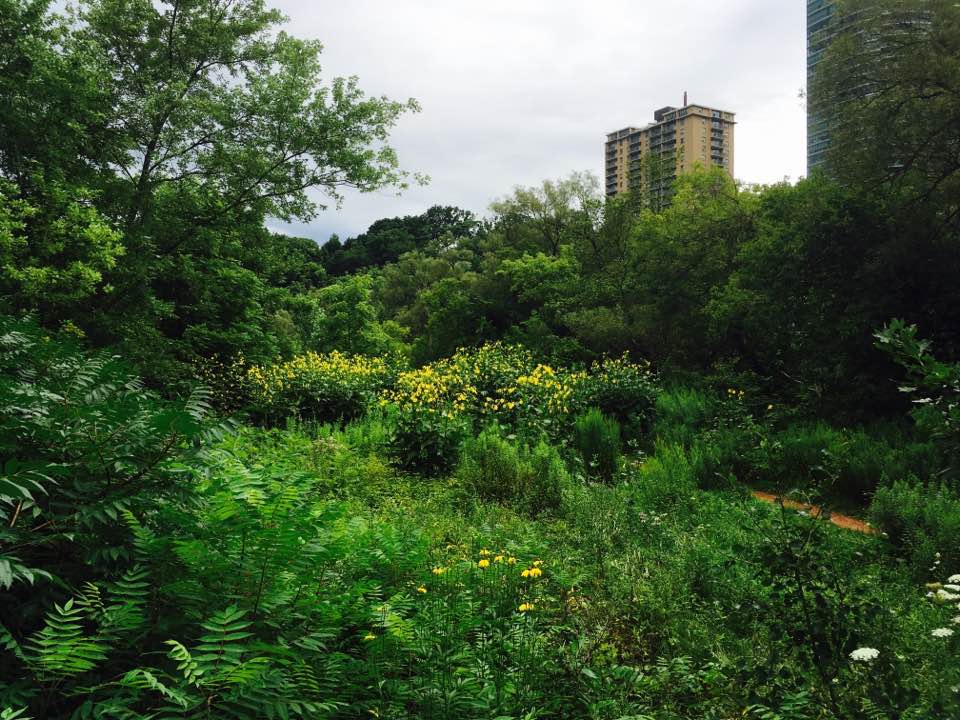
Fierce debate exists whether it’s High Park or Todmorden that deserves the title “Best place in Toronto to see cup plants”. Wandering past these spectacular giants as they flower from July-September, the correct answer is “who cares, I’m just glad to see them”.
This plant’s large, yellow composite flowers are obviously reminiscent of the common sunflower (Helianthus annuus) and not surprisingly – while these two species are in different genus, both are members of the aster family.
The toothed leaves of this plant grow opposite one another and are joined together along its square stem, formed a small “cup” at the join. After a rain fall, these cups retain water for many hours, to the great benefit of visiting birds who stop to take a sip and feast on the insects caught in these little pools.
 Black locust (Robinia pseudoacacia)
Black locust (Robinia pseudoacacia)
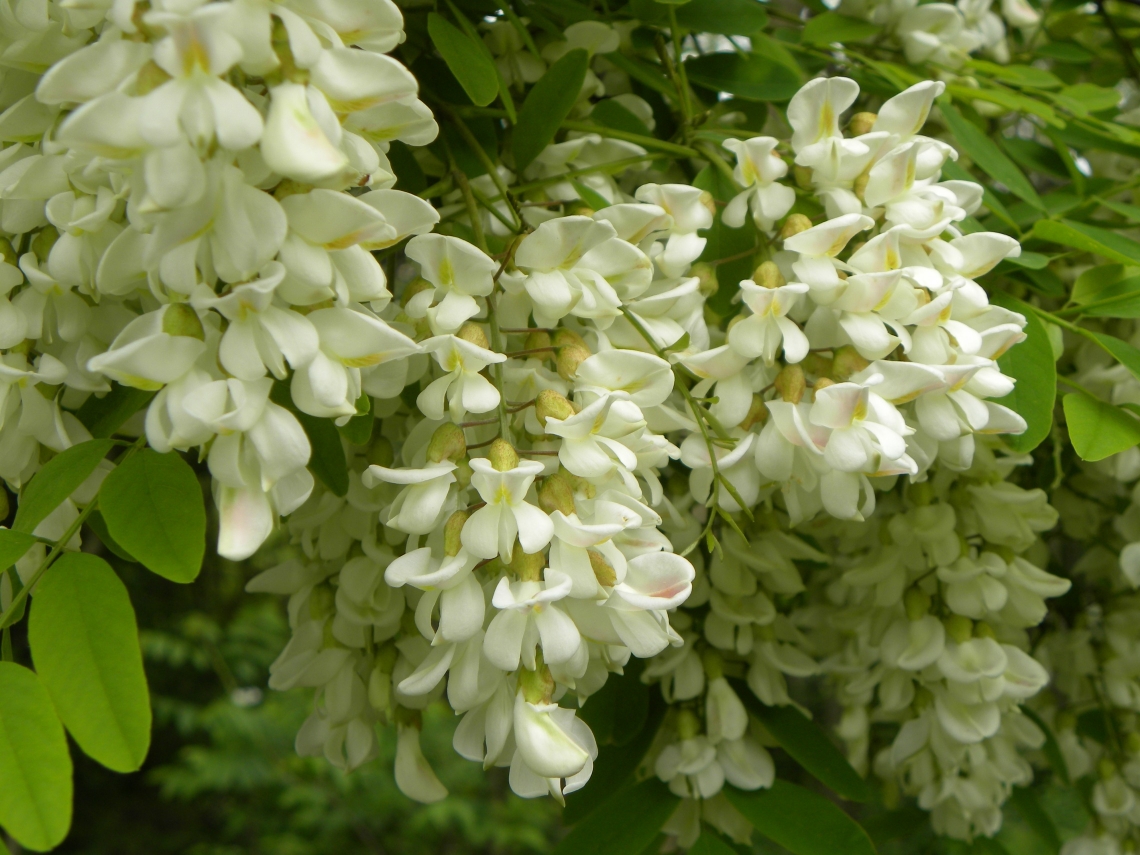
Black locust trees are easily identifiable in early June by their stunning and fragrant cascades of short-lived blooms. When not in flower, their telltale feature are the pairs of short prickles (thorns) that straddle the base of leaves on mature trees.
Black locust is not native to Ontario, hailing instead primarily from West Virginia, Kentucky, Tennessee and surrounding states, with a separate population found throughout the Ozarks. Humans, however, have seen to it that black locust now thrive virtually everywhere on the planet, as far afield as South Africa, Pakistan, Australia, and southern South America. It is considered an invasive species in most places outside of its natural range simply due to its formidable ability to grow and spread, but also because of it notable ability to fix nitrogen which can radically transform soil and local species composition over time.
Rumour has it that one of the founders of the Todmorden Mills Wildflower Preserve, the venerable Charles Sauriol, knew well the potentially detrimental effects of black locust, yet couldn’t bring himself to work towards the eradication of the species from the Preserve. As a passionate beekeeper, Sauriol prized the honey made by bees that visited black locust flowers – renowned worldwide for its delicate, almost fruity taste, and low viscosity.
 Locust Experimental Area
Locust Experimental Area
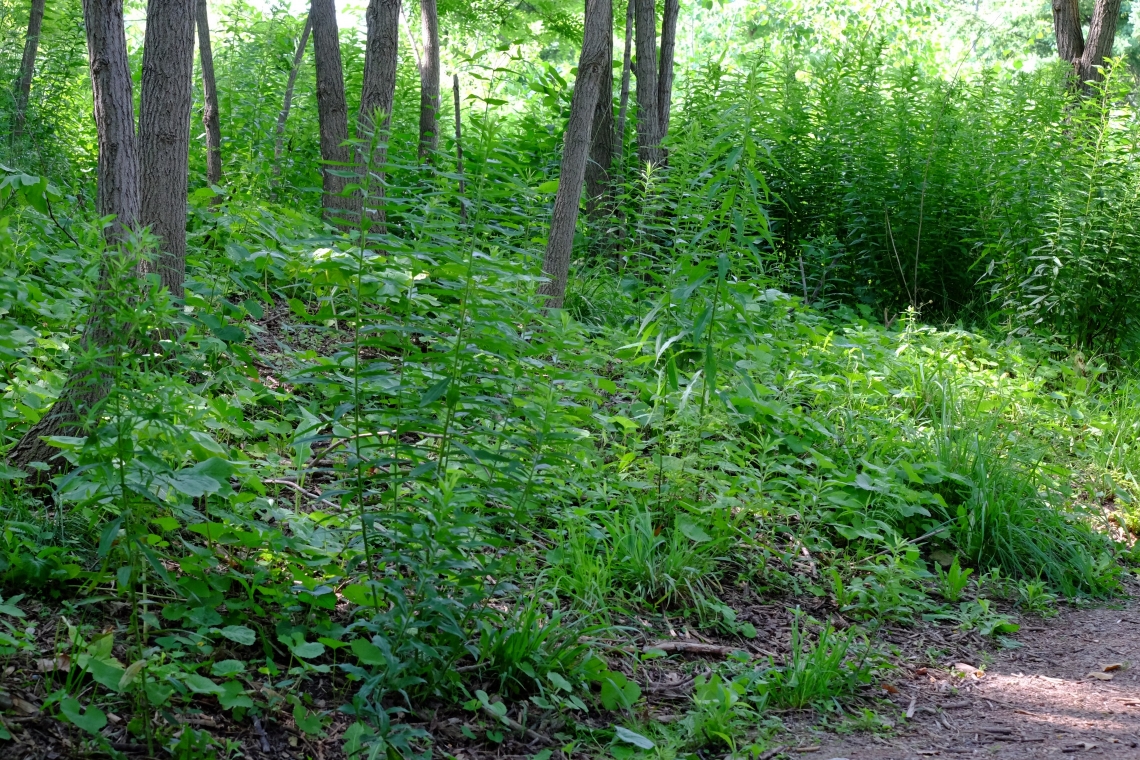
Back in the early 2010s the understory beneath this grove of black locust trees was little more than a monoculture of invasive garlic mustard (Alliaria petiolata). Among garlic mustard’s many horrifying impacts, it is known to perversely alter nitrogen availability and nutrient cycling in the soil it invades. Coupled with black locust’s ability to fix nitrogen, and the excessive amounts of nitrogen introduced by urban rain and runoff, local stewards were left feeling this particular spot in Todmorden was a well-spring of ecological travesty waiting to flood.
Since the mid 2010s, stewards have been engaged in a long-term restoration experiment in this area. The first phase involved the manual removal of every last bit of garlic mustard they could find growing here. This was then followed by the reintroduction of native bio-matter – twigs, leaves, branches, etc. – meant to help restore more familiar soil structure & function and reduce overall nitrogen levels.
In the following years, stewards have experimented with planting a variety of different native species here to see what might thrive: zig zag goldenrod, mayapple, and a variety of different asters, ferns, and sedges – basically anything they felt might stand a chance at reclaiming the area.
To call this a labour of love would be an understatement. Garlic mustard seeds are known to survive 5-40 years in the soil. So, even today, stewards must remain constantly vigilant, pulling garlic mustard whenever it raises its ugly head, and continuing with experimental plantings.
 Stairs to the upland forest
Stairs to the upland forest
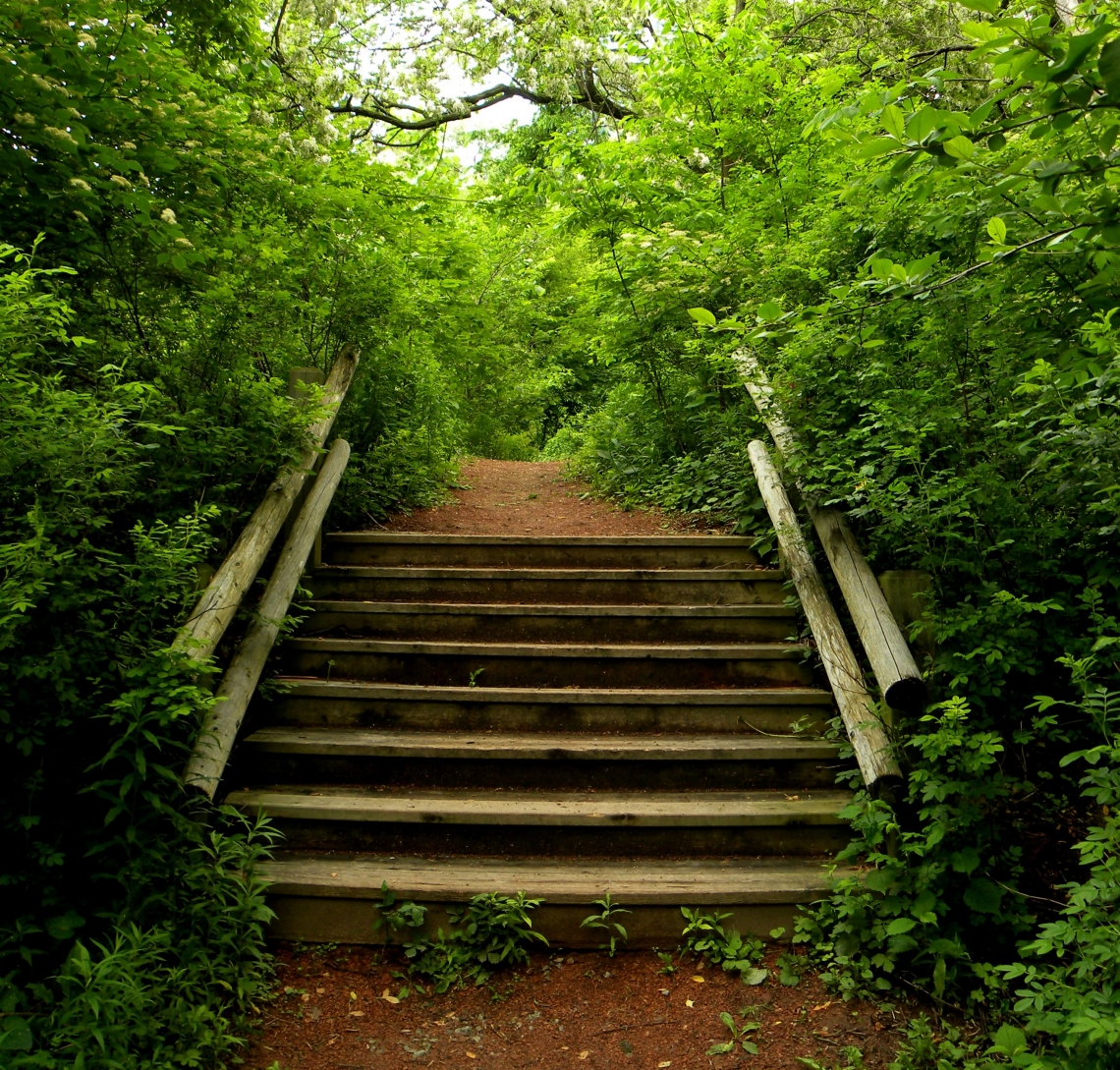
Climbing this short staircase delivers you to an undulating section of trail that crosses the very heart of Todmorden. Deep depressions, carved by nearby springs and street runoff, nourish white cedar, Jerusalem artichoke, red osier dogwood, joe pye weed, and a multitude of other species that enjoy wetter soils. On higher ground, look for jack-in-the-pulpit, white trillium, chokecherry, bloodroot, and heart-leaved aster growing under a stunning canopy of sugar maples, trembling aspen, eastern cottonwood, and the snags of many ash, recent victims of the invasive emerald ash borers that have decimated such trees all across Toronto.
The various boardwalks & bridges along this section of trail are excellent places to stop and scan your surroundings. Some of Todmorden’s most intriguing flora and fungi congregate in these places, nestled among the moss-covered branches and leaf litter that carpet the forest floor. Great views of the oxbow are offered, and are often the best places to catch a glimpse of egrets or great blue herons on the hunt.
 Todmorden Pond
Todmorden Pond
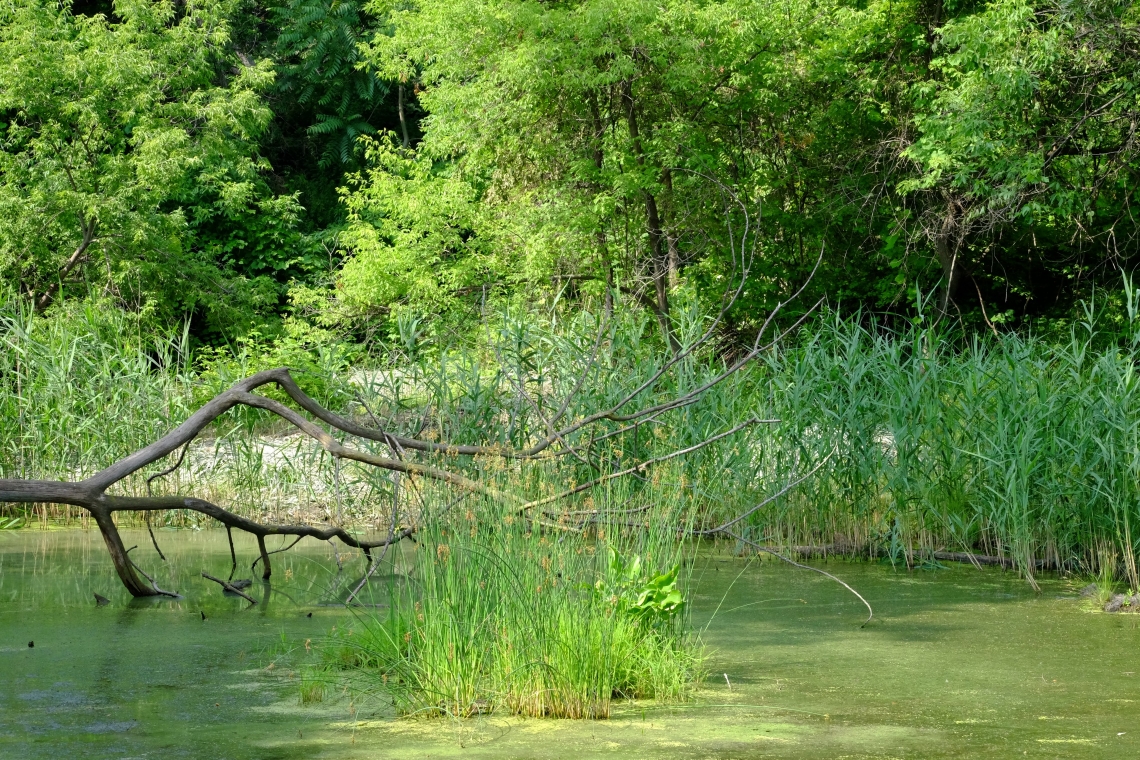
Decades ago this pond was little more than an often wet dip in the landscape. In 1994 the depression was enhanced and deepened by local stewards, giving rise to what is now one of Todmorden’s most vibrant and idyllic features.
Take a seat on the nearby bench, spend some time, and you’re sure to be rewarded. The pond attracts many species of dragonflies and damselflies, ducks & herons, snapping & painted turtles, American toads, and even the occasional muskrat. Spring visits are ideal, with opportunities to catch blue flag iris or marsh marigold in bloom, the air filled by a chorus of green frogs.
Of course, the pond is home to many exotic species as well. Invasive phragmites and yellow flag iris are a constant problem despite Herculean efforts by stewards to eradicate these destructive plants. Red-eared slider turtles, house pets “set free” by their owners, are also spotted with some regularity.
 Thanks, Todmorden Stewards!
Thanks, Todmorden Stewards!
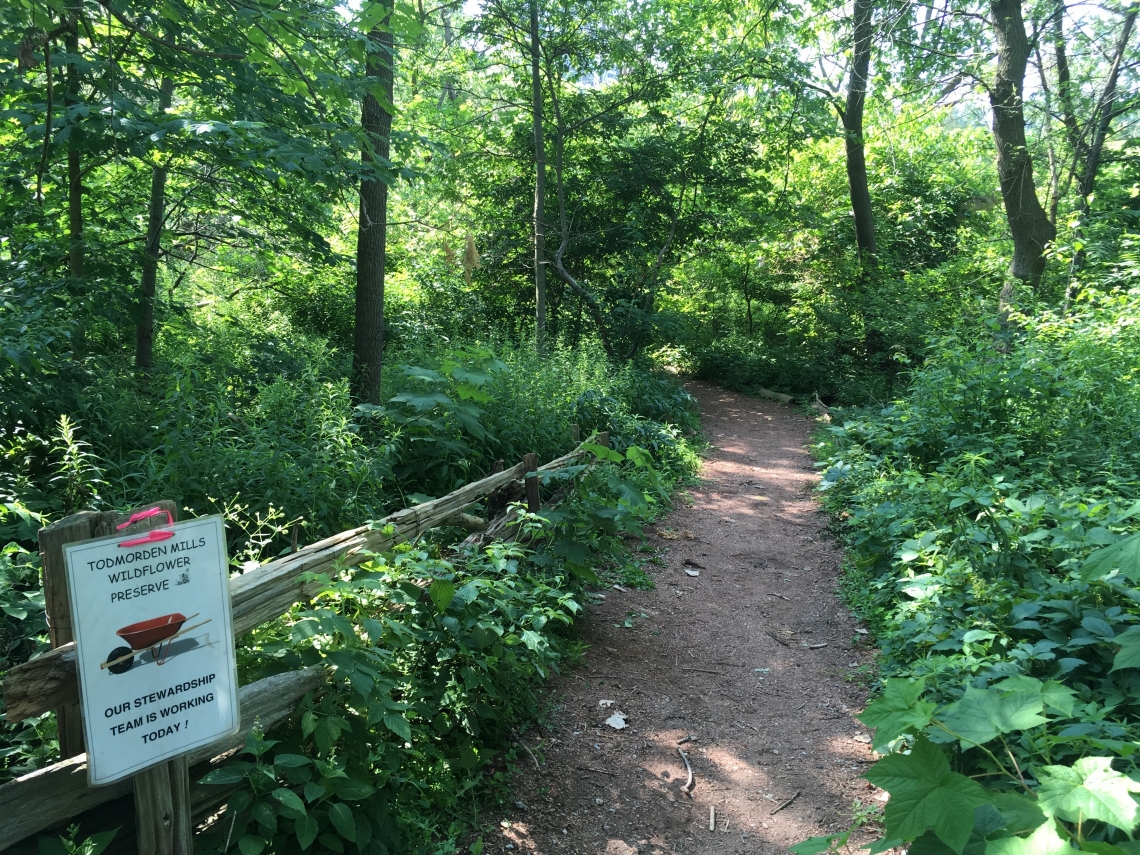
For over three decades a team of dedicated volunteers have worked tirelessly to maintain the Todmorden Mills Wildflower Preserve, and realign the area’s ecological trajectory to something closer to what it would have enjoyed without damages wrought by some two centuries of human activity & industry.
Founded in 1991 by celebrated naturalist Charles Sauriol, and Dave Money, past-president of the Ontario Horticultural Association, the Todmorden Mills Wildflower Preserve remains today a model of what a determined group of citizens can achieve in protecting and enhancing Toronto’s natural heritage.
We have them to thank for reintroducing over 150 native species to the Preserve, for relentlessly working to surpress the scores of invasive species that threaten Todmorden’s biodiversity, and for educating countless people on the great value of places like Todmorden and the species it protects.
If you might be interested in volunteering on the Todmorden Mills Wildflower Preserve Stewardship Team just email wildflowerpreserve@gmail.com.
Getting away: If you arrived via TTC, walk back up Pottery Rd. to Broadview and catch a bus south back to Broadview Station.
